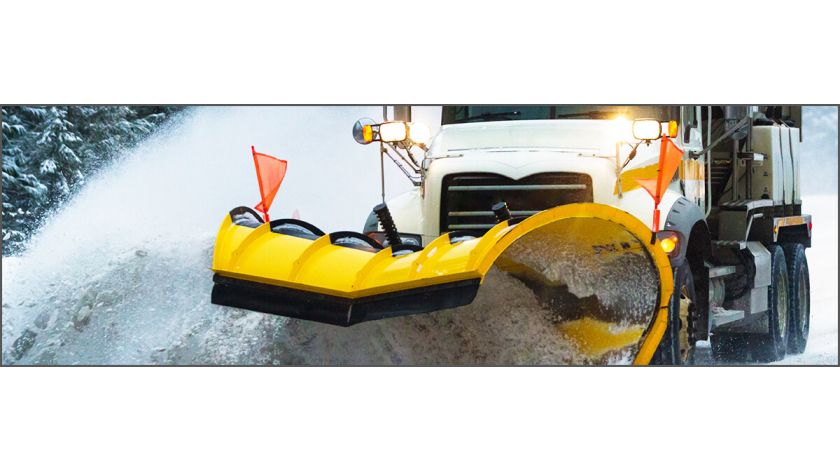
Winter comes about the same time every year, yet we always seem to forget how to operate when Mother Nature hits us with that first storm of the season. With the first day of autumn fast approaching, here are some tips to help you be prepared for winter plowing, no matter when it comes.
An effective preventative maintenance program will ensure that you’re ready to go at a moment’s notice. The first step to preparing for winter is to check your equipment and make sure it’s in operating order. Inside the vehicle, make sure it’s clean, that the defroster and heater work, the seatbelt is operational, and that the flares work among others. On the exterior, make sure you’re checking the brakes, tires, lights, mirrors, windshield wipers, plow blade, spreader and auger. Repair or replace anything that is broken. You can also consider upgrading your equipment for a safer plowing experience. TVH has recently launched a line of LED lights perfect for wintertime plowing. They offer the latest technology, last longer than halogen equivalents and use less energy while producing a stronger light output. Among our collection is the LED8500, a heated headlight that can melt off snow and ice in 15-20 minutes; the LED3030 and LED4545, temperature controlled work lights; and the LED04 series, blade position lights to help you know where your blade is at all times.
Ongoing training for new and experienced drivers is a must. It’s easy to be complacent when you’ve been doing something for a while, and that’s often how accidents happen. Drivers should be trained on how to operate their specific equipment. From turning on the windshield wipers to turning off any auxiliary lighting, knowing how things operate will result in a confident driver. Another major component of training should include the operator familiarizing themselves with their assigned snow route(s). This will allow them to identify (and if possible, correct) hazards such as curbs, road surface defects and soft/narrow shoulders ahead of time. Finally, refresh your operators on defensive driving techniques. It is their responsibility to always be alert to their surroundings. Drivers can use the acronym “SIPDE” to remember to scan, identify, predict, decide and execute.
In addition to training, your operators should also be reminded to obey traffic laws at all times. It may be tempting to not wear your seatbelt or to speed to get the job done sooner, but these place them and other drivers in an unsafe situation. In general, drivers shouldn’t go over 30 MPH while plowing. Furthermore, drivers should avoid consuming alcohol before or during their shift and avoid taking any drugs that might impair them, including some prescription drugs. While it’s not always possible, drivers should try to be as well-rested as possible before going on their shift.
Sleet, snow and ice all create unsafe driving environments. As a plow operator, you work day and night to keep the roads clear and safe to the best of your ability. TVH is here to help you be prepared for whatever is thrown at you. For more information on our cold weather light collection as well as everything else the company offers, contact your sales representative.